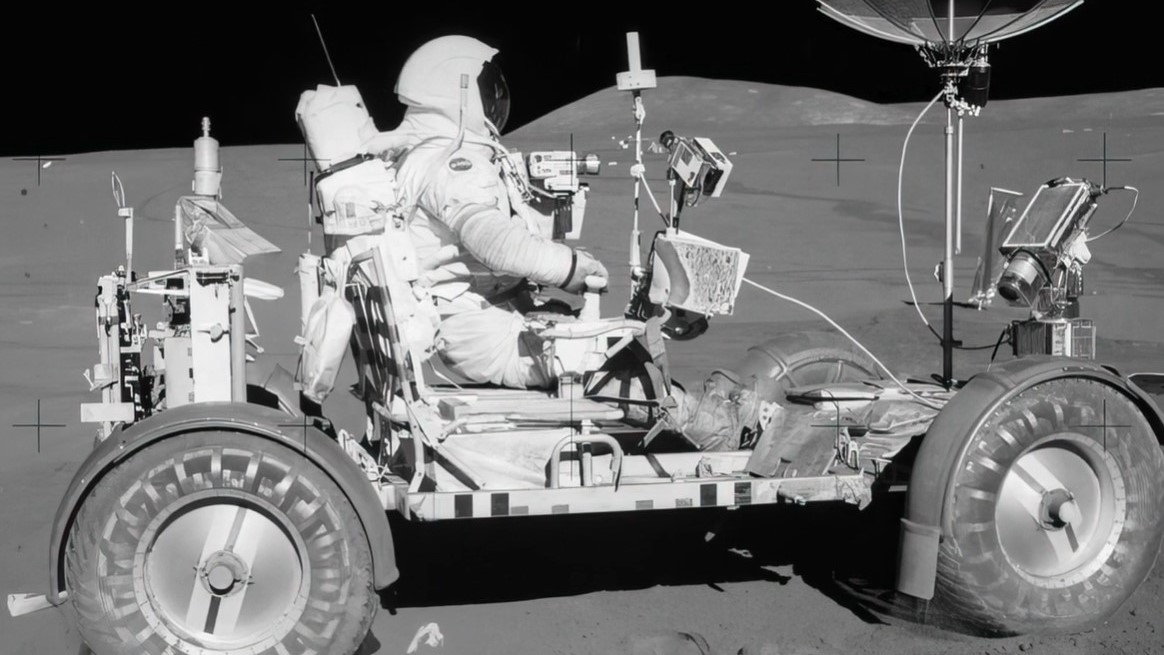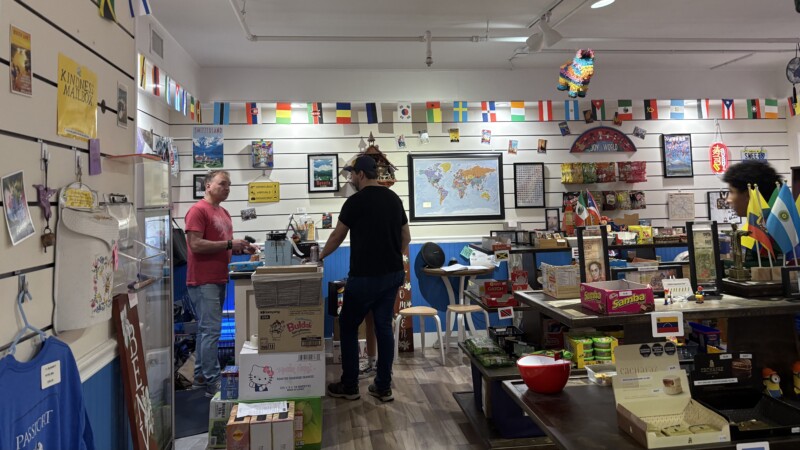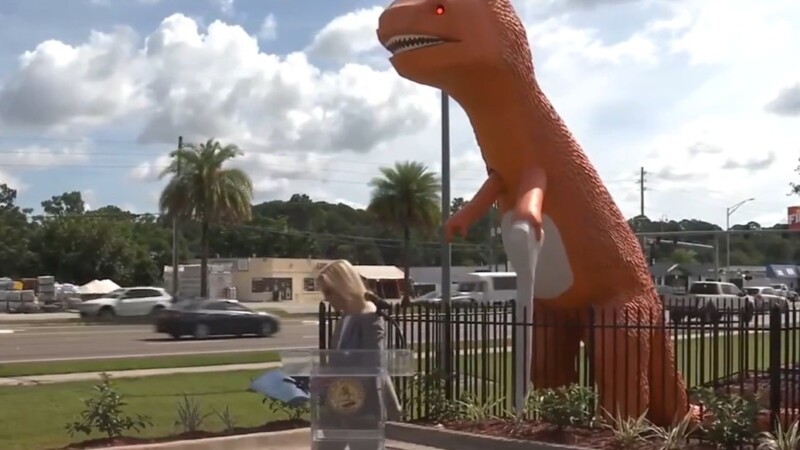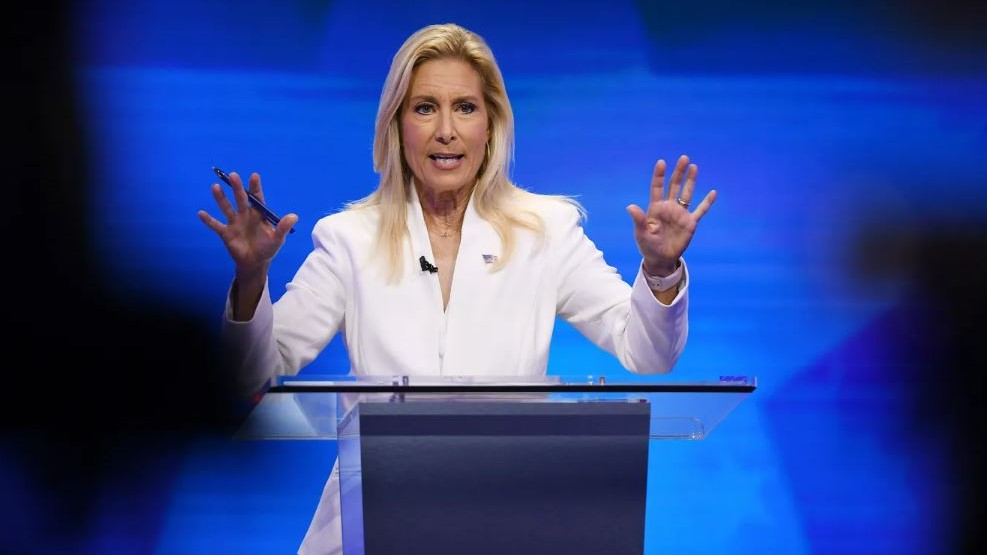Retired astronaut David Randolph Scott has survived a Gemini VIII space capsule in a manic roll. He has logged 546 hours and 54 minutes in space and was the first person to drive on the Moon during the Apollo 15 mission in 1971.
But the 90-year-old U.S. Air Force colonel now has one more cool entry on his voluminous resume. He is only the fifth person to receive the Jacksonville University Presidential Global Citizen Award. He received it Tuesday at the university.
During Scott’s drive on the moon, the 460-pound Lunar Rover was much easier to pick up and move in the Moon’s one-sixth lunar gravity. So JU President Tim Cost had a question for the former astronaut: What’s the Lunar Rover like to drive on the Moon?
“It’s easy to drive. It’s like a one-sixth G go kart,” Scott said.
“You control it with a stick, a hand controller to make it go forward and back. Pilots can even do that! That’s encouraging, right?” Scott joked to applause. “But it’s a marvelous machine. It was made very quickly. … They just blazed through it, put it on there and hoped it would work. And by golly, it worked and it was really great!”

JU’s Presidential Global Citizen Award is presented to a visionary leader whose impact is felt well beyond the bounds of their recognized responsibilities, the school said. The award winner embodies JU’s ideal of a globally engaged citizen, bringing to bear their “exceptional talents to create new opportunities to lead, live and learn.” Past award winners are PBS documentary producer Ken Burns; Makaziwe Mandela, daughter of Nelson Mandela; Mayo Clinic CEO Gianrico Farrugia; and PepsiCo CEO Indra Nooyi.
As to how Scott joined that group, Cost said he was reading a book by Scott when he got to the section about exploration. Cost said he decided his university should be focusing on that, so they invited Scott, knowing that he really did not need to be at JU, Cost said.
“He’s been doing this for 60 years, whether it was at the White House or whether it was in Paris or behind the Iron Curtain in Moscow in 1972,” Cost said. “Whether it was every major medal, award or trophy that can be given to first a U.S. citizen and an Air Force graduate, this gentleman has already received ticker tape parades in Chicago and down streets of New York City. So I humbly asked him if he would consider this award today, and he has done us a great service by doing that.”
Seated on a plaza on the Arlington campus, Scott and Cost engaged in a hourlong question-and-answer session about his life. Scott said he was honored to receive the award from a great school.
Scott is a West Point graduate who served as a fighter pilot in Europe for the Air Force before joining the Astronaut Corps in 1963. Training hard with the other early astronauts, Scott was assigned to the two-seat Gemini spacecraft program, paired with Neil Armstrong for the eighth mission.
That mission included training in how to dock with an unmanned Agena spacecraft, a skill needed when the Apollo spacecraft would have to connect to the Lunar Module for the trip down and back from the Moon. But it was during that Agena docking maneuver that the two spacecraft began tumbling.
“We were turning almost one revolution a second,” Scott said. “The thing had pretty much come unglued. There was one thing left to do, and Neil did it. He found one switch way in the corner because that was Neil Armstrong. He got us out of the box and we got down OK.”
Scott described Armstrong as always cool and calm and “the only guy” to be the first man on the Moon’s surface.
Scott said Apollo 15 would focus on science as a four-day mission versus one day on the lunar surface. As such, the Lunar Module was packed full of “a lot of toys to play with,” designed for all sorts of experiments. That included the 3-meter-long Lunar Rover, plus spacesuits equipped with emergency oxygen and the ability to share air with another suit if they had to walk miles to the lunar lander.
“Without the rover, we would have never gotten there,” Scott said. “But the rover was very flexible. It was easy to drive. It was easy to pick up and turn around if it got stuck.”
The Apollo 15 mission was from July 26 to Aug. 7, the ninth U.S. crewed mission and the fourth to land on the lunar surface, according to the NASA mission summary.
Mission objectives were to explore the Hadley-Apennine region, set up and activate lunar surface scientific experiments, make engineering evaluations of new Apollo equipment, and conduct lunar orbital experiments and photographic tasks. During three periods of extravehicular activity, Scott and Irwin completed a record 18 hours, 37 minutes of exploration.

That included traveling 17.5 miles in the first car that humans have ever driven on the moon, collecting more than 170 pounds of lunar samples as they obtained a core sample from about 10 feet beneath the lunar surface. But they drove only about 6 miles from the lunar lander, in case the rover broke down and they had to walk back.
And if their suits and the rover broke down?
“You had a bad day,” Scott joked to laughter.
The seventh person to walk on the Moon, Scott was also the Command Module pilot on Apollo 9, technical adviser for Ron Howard’s “Apollo 13” film, and one of only three astronauts to fly both earth orbital and lunar missions.
His one wish for the space program now: He hopes NASA “will get back to an Apollo design again and let this generation play in the sand. It’s fun, man!”
9(MDEwNzczMDA2MDEzNTg3ODA1MTAzZjYxNg004))







